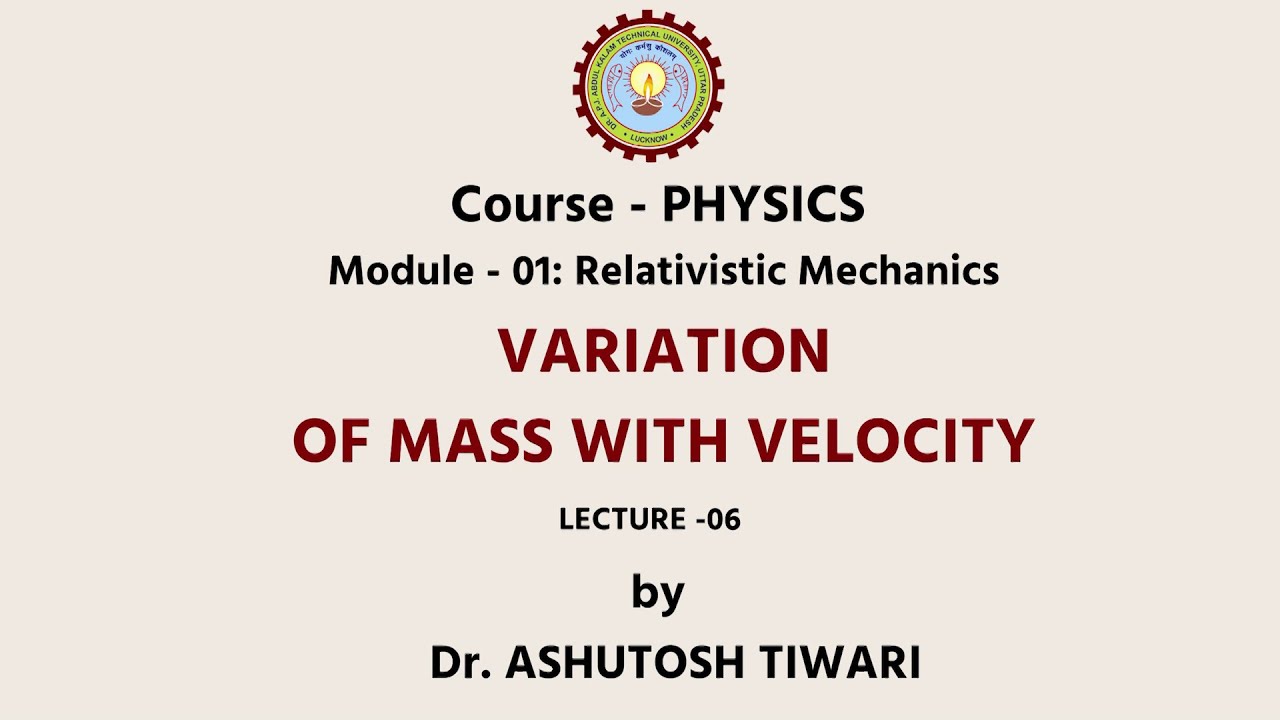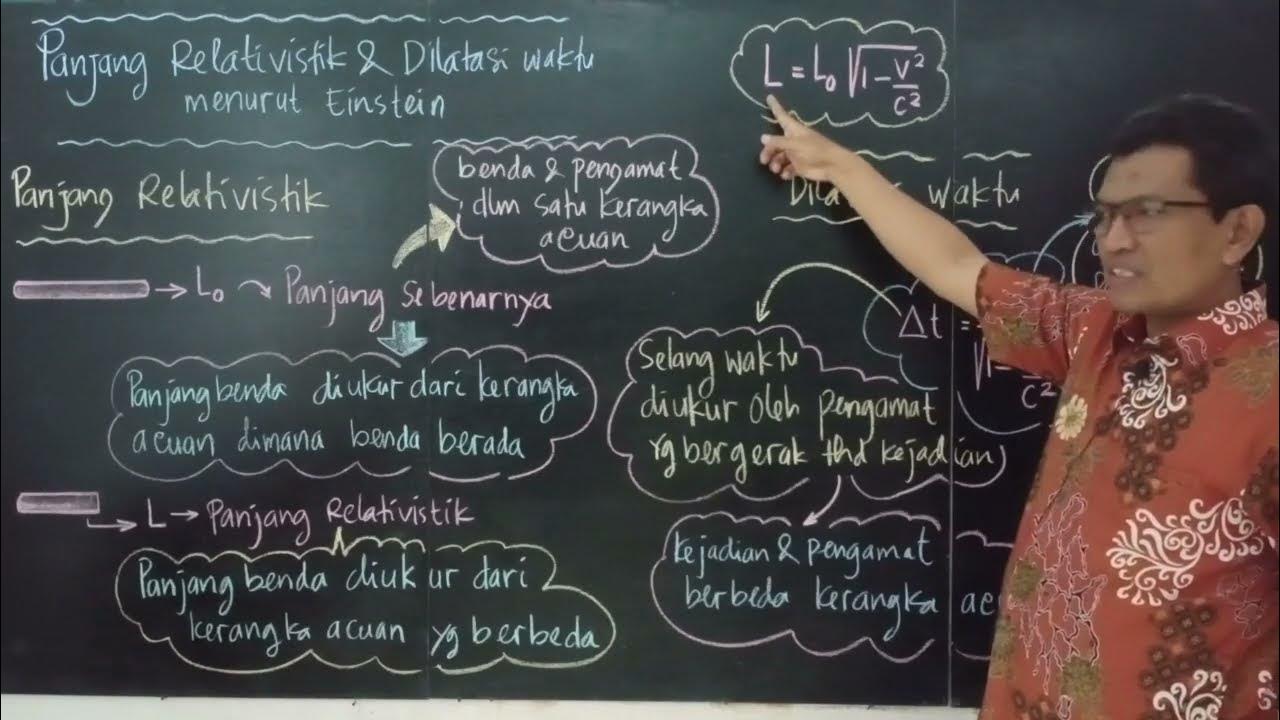Length Contraction and Time Dilation | Special Relativity Ch. 5
Summary
TLDRThis script explores the intriguing phenomena of time dilation and length contraction through the lens of Lorentz transformations. It explains how relative motion affects our perception of time and space, illustrating time dilation with a clock example and length contraction with a cat analogy. The video clarifies these concepts as distinct, not two sides of the same coin, and introduces the lesser-known 'duration contraction'. It emphasizes the importance of understanding spacetime intervals and encourages further exploration through Brilliant.org's special relativity course.
Takeaways
- 🔍 The Lorentz transformation is a mathematical representation of how spacetime is 'squeezed and stretched' when changing from a stationary to a moving perspective, or vice versa.
- ⏱ Time dilation is a phenomenon where time appears to run slower for an object in motion relative to a stationary observer, with the rate of a clock being perceived as slower by a factor dependent on the relative speed.
- 🕰 From the perspective of a moving observer, a stationary clock's ticks appear farther apart in time, indicating that time intervals are dilated due to relative motion.
- 📏 Length contraction is the phenomenon where the length of an object in motion is measured to be shorter than when it is at rest from the perspective of a stationary observer.
- 🧩 Length contraction involves both the stretching of spatial distances due to Lorentz transformations and the consideration of non-simultaneous measurements due to the object's motion.
- 📉 The factor by which time intervals are dilated or lengths are contracted is determined by the relative speed of the observers and can be calculated using a specific formula.
- 🚀 As speeds approach the speed of light, the effects of time dilation and length contraction become more pronounced, significantly distorting the perception of time and length.
- 🤔 The perception of time running slow for both observers moving relative to each other can be understood through the concept of worldlines and their rotation relative to one another.
- 🔄 Time dilation and length contraction are not two sides of the same coin; time dilation compares the times of the same events in a new perspective, while length contraction compares positions at the same time in the new perspective.
- 💡 There is also a concept similar to length contraction but for time, referred to as 'duration contraction', which describes the shortening of the time interval between simultaneous events at a single location as perceived by a moving observer.
- 📚 To better understand these concepts, engaging with visual aids like a spacetime globe or taking courses on special relativity, such as those offered on Brilliant.org, can provide valuable insights.
Q & A
What is a Lorentz transformation?
-A Lorentz transformation is a mathematical transformation that describes the relationship between two observers' frames of reference in Einstein's theory of special relativity. It represents a 'squeeze-stretch rotation' of spacetime that occurs when changing from a non-moving to a moving perspective, or vice versa.
What are the two famous implications of Lorentz transformations mentioned in the script?
-The two famous implications of Lorentz transformations mentioned are 'length contraction' and 'time dilation', which describe how the measurements of space and time intervals change for objects in relative motion.
How is time dilation observed when moving at a significant fraction of the speed of light?
-Time dilation is observed when a clock moving at a significant fraction of the speed of light is seen to tick slower from the perspective of a stationary observer. For example, if a clock ticks every 2 seconds at rest, a moving observer might measure it as ticking every 2.12 seconds.
What causes the perception of time dilation?
-Time dilation is caused by the Lorentz transformations, which stretch out time intervals as observed from a moving frame of reference. This effect is due to the relative motion between the observer and the moving clock.
How does the script explain the concept of length contraction?
-Length contraction is explained by considering a cat with a fixed position in space. From the perspective of a moving observer, the cat appears shorter than when viewed from a stationary frame because the Lorentz transformation affects the spatial distances, making them appear 'squeezed'.
What is the relationship between time dilation and the speed of light?
-The degree of time dilation increases as the relative speed between the observer and the moving object approaches the speed of light. The closer to light speed, the more pronounced the time dilation effect becomes.
How does the script differentiate between time dilation and length contraction?
-Time dilation compares the times of the same events in a new perspective, while length contraction compares the positions of the same events at the same time according to the new perspective. Time dilation is about the duration between events, whereas length contraction is about the spatial separation between events at a given time.
What is the concept of 'duration contraction' mentioned in the script?
-Duration contraction is a concept similar to length contraction but for time intervals. It refers to the phenomenon where the time between two events happening at the same location, as observed from a moving frame, is shorter than when observed from a stationary frame.
How does the script suggest we can better understand time dilation and length contraction?
-The script suggests using a spacetime diagram or a spacetime globe to visualize the effects of Lorentz transformations. These tools can help clarify the concepts by showing how time and space intervals are distorted relative to different frames of reference.
What resource does the script recommend for further exploration of special relativity concepts?
-The script recommends Brilliant.org's course on special relativity for further exploration and practice with problems related to time dilation and length contraction. It also mentions a discount for the course by using the link Brilliant.org/minutephysics.
Outlines

Dieser Bereich ist nur für Premium-Benutzer verfügbar. Bitte führen Sie ein Upgrade durch, um auf diesen Abschnitt zuzugreifen.
Upgrade durchführenMindmap

Dieser Bereich ist nur für Premium-Benutzer verfügbar. Bitte führen Sie ein Upgrade durch, um auf diesen Abschnitt zuzugreifen.
Upgrade durchführenKeywords

Dieser Bereich ist nur für Premium-Benutzer verfügbar. Bitte führen Sie ein Upgrade durch, um auf diesen Abschnitt zuzugreifen.
Upgrade durchführenHighlights

Dieser Bereich ist nur für Premium-Benutzer verfügbar. Bitte führen Sie ein Upgrade durch, um auf diesen Abschnitt zuzugreifen.
Upgrade durchführenTranscripts

Dieser Bereich ist nur für Premium-Benutzer verfügbar. Bitte führen Sie ein Upgrade durch, um auf diesen Abschnitt zuzugreifen.
Upgrade durchführenWeitere ähnliche Videos ansehen

The fundamentals of space-time: Part 2 - Andrew Pontzen and Tom Whyntie

Teori Relativitas Khusus: 1. Pendahuluan

Engineering Physics Variation of Mass With Velocity | AKTU Digital Education

Einstein’s relativity simply explained in Quran - There Is No Clash

Albert Einstein's Theory of Relativity

PANJANG RELATIVISTIK & DILATASI WAKTU | Relativitas Einstein - Fisika Kelas 12
5.0 / 5 (0 votes)
